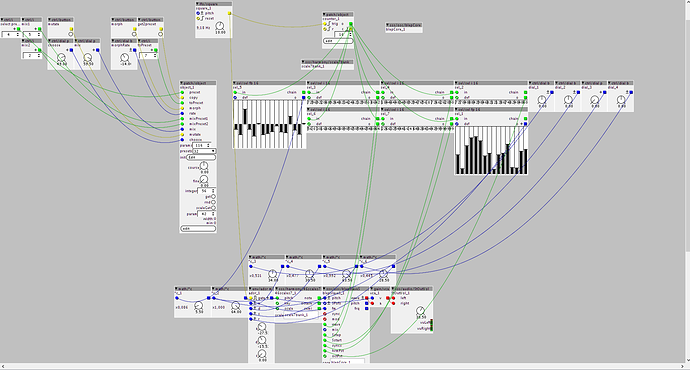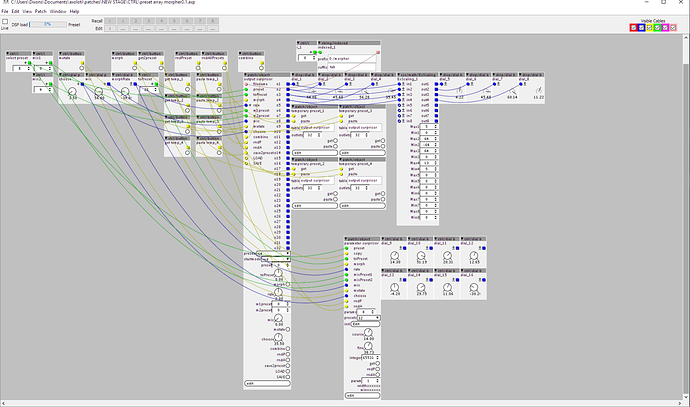Hi @SirSickSik!
Wow, just going through your modules for the first time, thank you for your generous work.
I was trying to program a simple MIDI looper when I ran into your PolymidiXL, which is great, but a few things don't seem to work:
The module is always active, independently of what I connect to the "active" inlet. I have a toggle button connected, when i switch to off, there's an all notes off, but it will keep recording. If I erase all, and set active to off, it will still record;
channel delete and delay don't work- i tried buttons and toggles and there's no effect; -> edit: _channel delete does work, but the drum machine i was using for clock master was also sending notes which would trigger the channel delete - maybe a way to filter out channels from the device input could be useful
undo and erase work, and so does the midi port selector.
Is this an error only on my device?
I also have one request- two, actually:
would it possible to switch the midi monitoring on or off (I mean the MIDI through for the notes)? I only need the MIDI clock to pass through (could use clocktx, for eg), but, in most situations, I'd rather not have the notes pass. Is this possible?
the other request would e for a way to turn edit on or off for each (or selected) channels via MIDI.
Again, thank you for your work, and for reading this. I'll keep digging around your library folder for a while.





